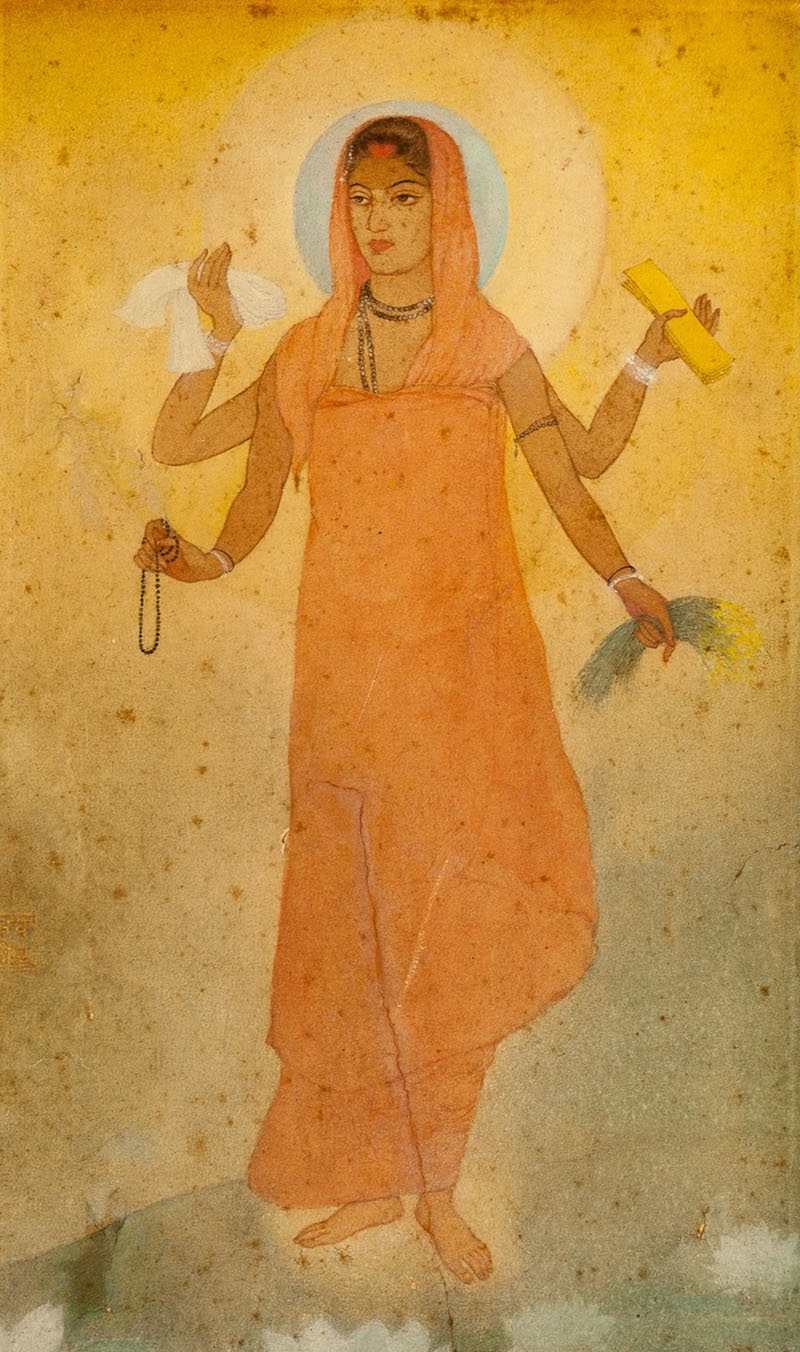Originating with the Bengal School in Calcutta (now Kolkata) in the mid-nineteenth century, Revivalism is a key art movement of Indian Modernism, characterised by a focus on Indian cultural, political and artistic identity through the revival of art forms such as folk art, Hindu imagery and a celebration of humanism. Prominent artists of the movement include Rabindranath Tagore, Abanindranath Tagore, Nandalal Bose, Sunayani Devi, Mukul Dey and Asit Kumar Haldar, among others.
The origins of the movement can be traced to the Great Exhibition of 1851, London, which presented new trends in industrial design and the Arts and Crafts movement of British artist William Morris, perpetuating a desire for the revival and preservation of traditional art industries in England. This sentiment was reflected in India and further reinforced by the showing of Indian ornamental arts in the Great Exhibition. The Swadeshi movement and the Bengal School were also instrumental to the perpetuation of Revivalism and its reinvigoration of Indian classical culture and artistic methods in the face of British colonisation, therefore counteracting European impositions on Indian cultural practices.
In India, the movement sought to promote national industry and artforms by encouraging the practice and production of uniquely Indian styles. The interpretation of a new ‘Indian’ art and aesthetic is usually attributed to Abanindranath Tagore and developed during the turn of the nineteenth century, when European realism was at its peak in Indian art, notably in Company paintings and the works of artists such as Raja Ravi Varma.
In contrast, Revivalist works were marked by the adoption of traditional Indian art forms and styles, such as Mughal, Rajashtani and Pahari miniature styles. Abanindranath Tagore also adapted Japanese and Chinese artistic practices, such the wash painting technique, to Indian themes with the aim of developing a pan-Asian artistic style that exists independently of Western ideals. The adoption of such techniques was instrumental in lending Revivalist works their characteristic colour-harmony, as in Abanindranath Tagore’s The Birth of Krishna (1895–97).
While there were stylistic differences among the Revivalist artists, they were nonetheless marked by a commonality of palette and materials, with sombre colour schemes and simplistic figures, as well as Indian symbolism. A notable work is Abanindranath Tagore’s Bharat Mata (1905), which shows a young woman holding objects representative of India in her four arms. Similarly, Bose’s painting Sati (c. 1908), while widely differing in style and content, demonstrates a similar tonal palette and lightly washed colour gradations to create a naturalistic figure in a dream-like background.
The movement also gained traction among critics, notably AK Coomaraswamy and EB Havell. Coomaraswamy advocated for the independent evolution of Indian idealism and art historical achievements in his essay Art and Swadeshi (1912), whereas Havell supported the Bengal School’s Revivalism in his role as principal of the Government College of Art and Craft, Calcutta, urging students to investigate Indian as opposed to British modes of artistic expression.
While Revivalism developed as a means of honouring the artistic past of the Indian culture in the face of colonial forces, the movement’s inclination towards idealism and the religious undertones in the artworks have been strongly critiqued, with proponents such as Havell being variously considered champions of Indian art and artists and propagators of British colonial agenda and ideological nationalism that were instrumental to extending British rule in India.
Works by Revivalist artists remain imperative to illustrating the cultural landscape of India at the turn of the century, with the nation moving towards independence. In 2014, the National Gallery of Modern Art, Bengaluru, exhibited works by core Bengal School artists such as Abanindranath Tagore, Bose and Devi to mark India’s sixty-eighth year of independence. Curatorially split into two segments, the first segment showed works by practitioners of Revivalist traditions while the second segment showed the works of artists who broke from Revivalist traditions, such as Jamini Roy and Prodosh Das Gupta.
Revivalism dwindled in the early-twentieth century with the development of individualistic and Modernist practices and schools. Despite the movement’s emphasis on a return to historical and traditional art forms, it has also been considered vital to the development of Modernist and individualistic art practices in India, enabling artists such as Roy and Das Gupta to break away from the strict artistic trajectories to explore new aesthetic movements.







